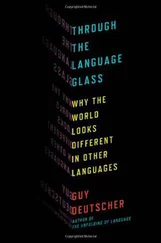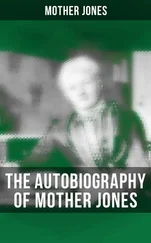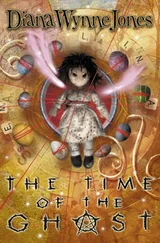1 ...7 8 9 11 12 13 ...76 Some ancestral voices are particularly fluent in telling the story of the past. Mitochondria are small energy-producing structures in the cell. Each has its own piece of DNA, a closed circle of about sixteen thousand DNA bases, quite distinct from that in the cell nucleus. Eggs are full of mitochondria but those in sperm are killed off as they enter the egg. As a result, such genes are inherited almost exclusively through females. Like Jewishness, they pass from mothers to daughters and sons, but daughters alone pass them on to the next generation.
Kvery family, every nation and every continent can trace descent from its mitochondrial Eve, a woman (needless to say, one of many alive at the same time) upon whom all their female lineages converge. Sometimes she lived not long ago: in New Zealand, lor iiist.iin.i-, iifiirly all Maoris share the same mitochondrial identity, hulling that just a few women founded their nation a thousand years ago. A world family tree based on mitochondria finds its roots in Africa, with more diversity in that continent than anywhere else. To track more recent paths of migration shows that mitochondria are an accurate record of history: thus, in the New World, native mitochondria have a tie with those of Siberia, confirming an ancient pattern of migration.
Shared genes link New Zealand, Siberia and the rest of the world to an African ancestor. The first modern human appeared in Africa over a hundred thousand years ago, in the continent that gave rise to most of our pre-human kin and of the apes to whom we claim affinity. A few of these African relatives from a deeper branch of the tree are alive today. One, the chimpanzee, has always seemed a near neighbour; and Koko (an inhabitant of the Gombe Stream Reserve) was the first animal to have an obituary in The Times.
As any literate teenager knows, Tarzan of the Apes was proved to be the son of Lord Greystoke by virtue of the inky fingermarks in a childhood notebook. Galton had shown that chimpanzees have fingerprints that look much like those of a human being. Chimps and men, they prove,share genes. A joint heritage goes beyond the fingertips. A distinguished geneticist of the 1940s once tested whether chimps share our variation in the ability to taste the bitter chemical PROP by feeding it to three of the inhabitants of London Zoo. Two swallowed the drink with every sign of delight, but the third spat the liquid all over the famous professor as further evidence of common ancestry.
The biological affinity goes much further. Apes have blood groups like our own, their chromosomes are almost identical, and a test of the overall similarity of DN A shows that humans share ninety-eight per cent of their genetic material with chimpanzees. We trace relatedness to the rest of the animal kingdom as well, with about a quarter of our genes similar to others in remote places among the insects or the jellyfish. Mice and men have much more in common, including dozens ol inherited diseases. We share even more genes with rabbits and plenty with remote branches of existence, from bacteria to yeasts to bananas. All living creatures seem to need a set of 'housekeeping genes* that do the basic work of the cell, and many of the seven hundred such structures are shared. Most have changed little since they began. An unkind experiment in which more and more of the five hundred genes in a simple bacterium were destroyed showed that it needs, at an absolute minimum, three hundred or so; nearly all of which have parallels in our own DNA. This common core shows that the most unlikely beings speak the same genetic language.
Pharaoh Psamtik the First, who flourished in the seventh century before Christ, searched for the first word of all. He put a baby in the care of a dumb nurse and noted the sounds it made. One word was (or seemed to be) 'becos', the Phrygian for bread, suggesting to Psamtik that the Phrygians (who lived in what is modern Turkey) were the first people of all. A computer search through the millions of DNA letters now sequenced from dozens of organisms also hints at a shared structure from bacteria to humans; the father (or mother) of all genes, that might have persisted since life began. The scientist who published the ur-sequence has turned the information to a useful end. Assigning musical notes to each DNA letter he used them as a theme for a 'symphony of life'.
Gene sharing, from bacteria to humans, proves the unity of existence. It also defines the limits ot what biology can say. A chimp may share ninety-eight per cent of its DNA with ourselves but it is not ninety-eight per cent human: it is not human at all — it is a chimp. And docs the tact that we have genes in common with a mouse, or a banana, say anything about human nature? Some claim that genes will tell us what we really are. The idea is absurd.
One gene is found in a certain form in men, but a different one in all other apes. It codes for a molecule on the cell surface much involved in communication between cells, brain cells more than most. Perhaps this is the gene — or one of the genes — that makes us human. Its message spelt outin the four DNA letters, A, G, C and T starts like this: AACCGGCAGACAT… Altogether, it has three thousand letters. Together they contain an important part of the tedious biological story of being a man or woman rather than a chimpanzee or gorilla. Needless to say, that ancestral bulletin does nothing to tell us — or apes — what it means to be part of humankind. That calls for a lot more than a sequence of DNA bases and lies outside the realm of science altogether.
St Bede — whose writings are the best source of information about England before the eighth century — had a powerful metaphor for existence. To him human existence was 'As if when on a winter's night you sit feasting with your eaidormen and rhegns, a single sparrow should fly swiftly into the hall, and coming in at one door instantly fly out through another. In that time in which it is indoors it is indeed not touched by the fury of the winter, but yet, this smallest space of calmness being passed almost in a flash, from winter going into winter again, it is lost to your eyes. Somewhat like this appears the life of man; but of what follows or what went before, we are utterly ignorant.' His allegory was a religious one but has a biological parallel. Genes have a memory of their own. To read it gives new hope of looking beyond the hall into which our own brief existence is confined. It allows us to learn what went before in the life of out own species; to guess ar what happened much earlier, and even ro speculate about what fate may hold for generations yet to come.
Chapter Two THE RULES OF THE GAME
It is always painful to watch an unfamiliar game and to try to work out what is going on. Although I livi'tl in the United States for several years, and although tin* sport is now shown on British television, I have almost no idea how American football works. There is a clear general desire to score, but how play stops and starts and why the spectators cheer at odd moments remains a closed book. A deep lack of interest in balf games helps in my case, but cricket is equally dull to sporting enthusiasts from other countries. They just do not understand the rules.
The rules of the game known as sexual reproduction are not obvious from its results. As a consequence, how inheritance works was a closed book until quite recently. Part of the problem is that the way sex works is so different from how it seems that it ought to. It seems obvious that a character acquired by a parent must be passed on to the next generation. After all, blacksmiths' children tend to be muscular and those of criminals less than honest. In the Bible, Jacob, when allowed to choose striped kids from Laban's herd of goats, put striped sticks near the parents as they mated in the hope of increasing the number available. Later, pregnant women looked on pictures of saints and avoided people with deformities. It took a series of painful trials in which generations of mice were deprived of their tails to show that acquired characters were not in fact inherited. Of course, Jews had been doing the same experiment for thousands of years.
Читать дальше
Конец ознакомительного отрывка
Купить книгу












